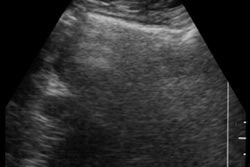Musculoskeletal injury (MSI) in sonographers has reached epidemic proportions in the United States and elsewhere in the world. Joan Baker, past president of the Dallas-based Society of Diagnostic Medical Sonographers, delivered the dramatic results of a survey collected from U.S. and Canadian sonographers at last week's American Healthcare Radiology Administrators (AHRA) conference in Nashville.
Baker, clinical coordinator of the ultrasound program at Bellevue Community College in Seattle, explained that MSIs are physical problems caused by overloading muscles. The resulting strain leads to pain, inflammation, swelling and deterioration of tendons and ligaments. Any of the following factors, alone or in combination, can result in MSI:
- Rapid repetitive movement
- Overuse
- Too much strain or force
- Uncomfortable positioning of limbs
- Holding posture in an unnatural or strained position
Right-handed scanning generally presents shoulder and neck injuries, while left-handed cardiac scanning presents wrist and elbow injuries in sonographers. Symptoms include a dull ache; loss of sensation or numbness, tingling, or burning; tenderness and swelling; and ganglion cysts and muscle spasms. Symptoms can occur at any time, but most often occur away from work in the evenings. Unfortunately, Baker said, many sonographers fear that reporting the pain may result in trouble on the job.
"There’s reluctance on the part of physician-employers to diagnose these injuries as work-related. So, I advise sonographers to not accept the referrals of physician ‘bosses’ and consult a specialist in MSI if they’re experiencing pain," said Baker. For those sonographers who sought out treatment, the survey results are encouraging -- close to 68% of respondents reported that it was moderately or very effective.
The survey numbers cited in Baker's presentation are compelling. Approximately 80% of the respondents were between 30 and 49 years old with an average of 11 years' experience as sonographers. Of the total population surveyed, an average of 84% experienced pain or discomfort since starting work as sonographers. The average length of time a sonographer is in the profession before experiencing pain is five years. The current career-ending injury rate in the profession is 20%, and more than 73% of worker’s compensation claims for sonographers are accepted.
An ultrasound machine that lies idle for one week due to sonographer injury loses an estimated $10,000 (U.S.) in chargeable revenue, and four weeks of chargeable revenue loss is equivalent to the average annual salary of a sonographer. Thus, economics alone would seem to dictate that employers work aggressively with equipment manufacturers and in the workplace to reduce injuries.
Baker recommends the following steps for employers:
- Hire adequate staff to provide breaks. (More than half of survey respondents reported being able to take only one 10-minute break per shift.)
- Provide state-of-the-art equipment to lessen fatigue and scanning time. (Scans take an average of 15 - 45 minutes to perform, and most of that time is spent in very compromised and difficult positions with no opportunity to relax from static postures.)
- Provide adjustable stretchers and chairs to allow for more ergonomic positioning. (A sit/stand stool is priced about $325 (U.S.) and can be amortized within two patient studies.A set of support cushions costs approximately $175 (U.S.) and can be reimbursed with one patient study. An ergonomic exam table averages $5,200 (U.S.) and its cost can be recovered from two to three days' work.)
- Furnish rooms with appropriate lighting and adequate space to adjust equipment.
- Provide monitors for patient viewing to avoid sharing scopes with patients. (An external monitor will cost about $200 (U.S.) and can be reimbursed within one patient study.)
Administrators should also be aware that retrofitting ergonomically inadequate equipment does not relieve them of liability for worker’s compensation. "You need to make ergonomics part of the buying decision," counseled Baker.
In addition, employers should obtain on-site ergonomic evaluations of sonographer workspaces, set appropriate staffing schedules, promote the effective use of accessory equipment, and educate staff about the risk factors for occupational injury, Baker said.
By Jonathan BatchelorAuntMinnie.com staff writer
August 17, 2000
Let AuntMinnie.com know what you think about this story.
Copyright © 2000 AuntMinnie.com



















